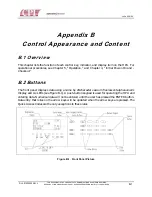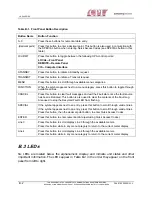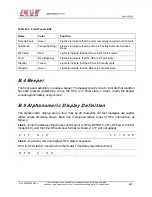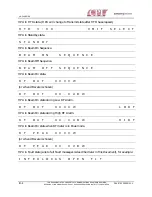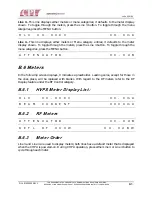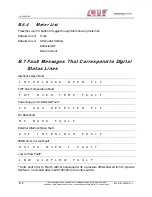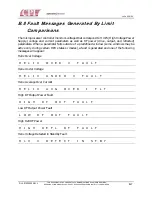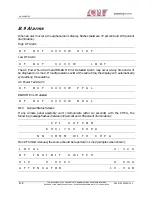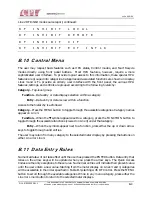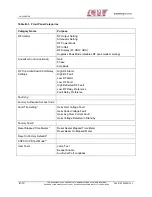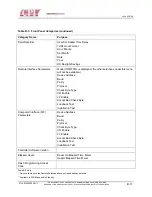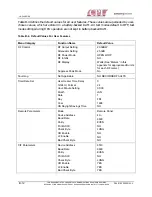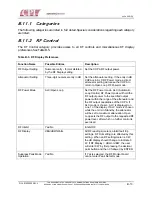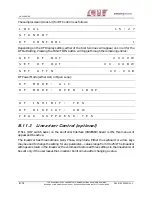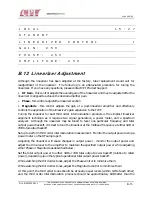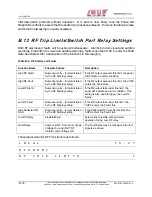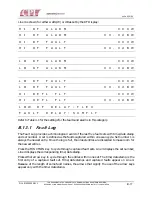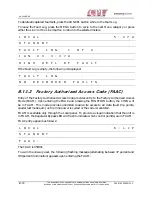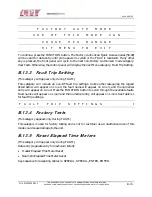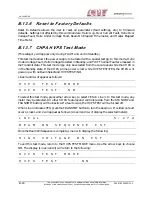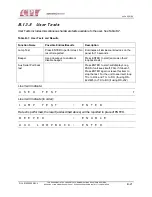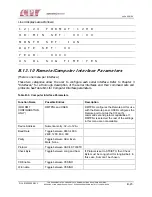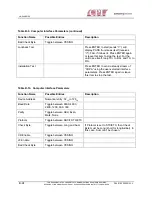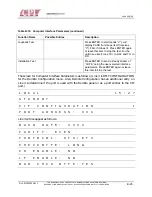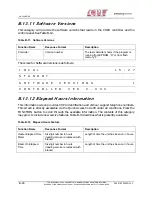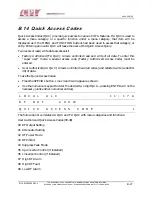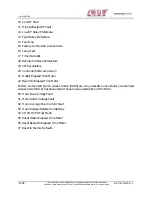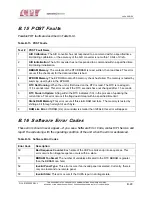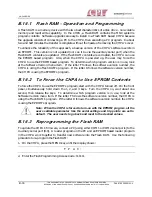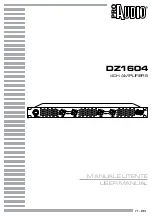
CHPA SERIES
D
OC
.01023245
R
EV
.L
THIS
DOCUMENT
IS
THE
PROPERTY
OF
COMMUNICATIONS
&
POWER
INDUSTRIES.
REPRODUCTION
OR
RELEASE
WITHOUT
EXPRESS
PERMISSION
IS
STRICTLY
PROHIBITED
B-15
L O C A L
1 5 : 2 7
S T A N D B Y
L I N E A R I Z E R C O N T R O L
t
G A I N : 2 5 0
P H A S E : 2 5 0
A M P L I T U D E : 2 5 0
B.12 Linearizer Adjustment
Although the linearizer has been adjusted at the factory, tube replacement would call for
readjustment of the linearizer. The following is an abbreviated procedure for tuning the
linearizer. If you have any questions, please contact CPI Product Support.
• RF Gain - this control adjusts the overall gain of the linearizer and may be adjusted after the
linearizer is aligned to achieve the desired amplifier gain.
• Phase - this control adjusts the linearizer section
• Magnitude - this control adjusts the gain of a post-linearizer amplifier and effectively
controls the application of the linearizer’s gain expansion to the TWT.
Tuning the linearizer for best third order intermodulation products is the simplest linearizer
alignment technique as it requires two signal generators, a power meter, and a spectrum
analyzer. Although the linearizer may be tuned to favor one particular frequency and total
output power backoff, it is best to tune the linearizer at the midband frequency at either 4dB or
7dB total output backoff.
Set up to perform third order intermodulation measurement. Monitor the output power using a
power meter on the RF sample port.
Adjusting the linearizer will cause changes in output power - monitor the output power and
adjust the drive level to the amplifier to maintain the specified output power while adjusting
either Phase or Magnitude as described below.
Set the total output power to either 4dB or 7dB total output power backoff (relative to rated
power), depending upon the typical operational total output power backoff.
While watching the third order tones, adjust the Phase control to minimize them.
While watching the third order tones, adjust the Magnitude control to minimize them.
At this point, the third order tones should be at nearly equal levels (within 1dB of each other)
and the third order intermodulation products should be approximately 6dB better than the

